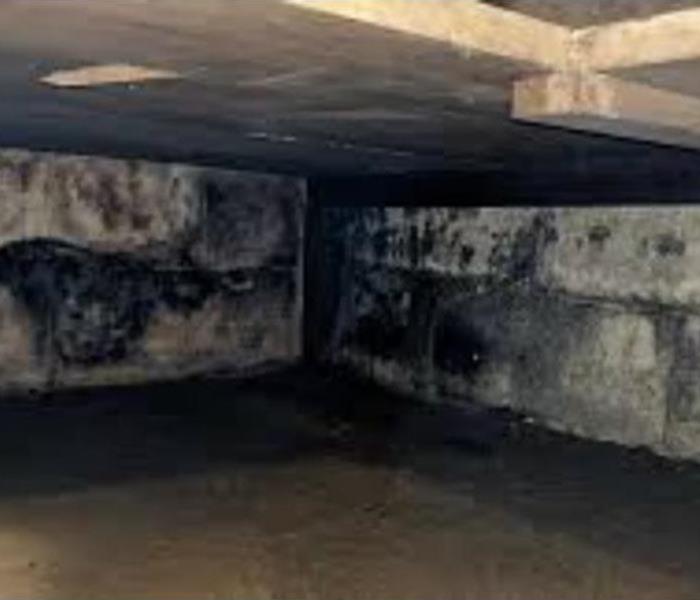Mold Grow on Concrete and Cement
9/15/2022 (Permalink)
What Does Mold on Concrete Look Like?
On concrete or cement surfaces, mold will often appear as black, green, brown, or white. It may look like staining, or it might be fuzzy or raised. Sometimes, mold will look like algae or moss.
Over time, mold will break down the material it’s growing on. Assuming ideal mold-growing conditions are maintained, and the mold remains unmitigated, surfaces like concrete can quickly become compromised.
Efflorescence vs. Mold
Not all staining is caused by mold. For example, efflorescence is a white deposit left behind on surface materials when water evaporates and is often mistaken for a white mold. Efflorescence can be dissolved or wiped away while staining from mold would need to be scraped or scrubbed off the concrete.
How to Get Mold off Concrete
If you suspect mold on cement or concrete in your home, contact a professional remediation service provider. Mold is not only difficult to remove, but it can be a danger to your health. Further, without professional water damage restoration, you run the risk of repeat mold growth.
After you’ve discovered mold on a concrete surface, we recommend:
Sealing off the room (if possible).
Contact SERVPRO of Streamwood, Bartlett, West Chicago, and Warrenville
Once our team has arrived at your home, we’ll:
Inspect the area and confirm the presence of mold.
Contain the space and begin the mold removal process.
Ensure the space is completely dry and address the underlying cause of the mold (often plumbing, drainage, or high humidity).
Apply a penetrating concrete sealant to prevent a recurrence.
How to Prevent Mold on Concrete
Take steps to prevent mold growth on concrete and cement surfaces inside your home, including slab foundations and block walls. Common precautions include:
Preventing water seepage: Have your foundation inspected. If water is infiltrating your home through the basement floor or walls, consider professional sealants and fillings.
Directing roof runoff away from your home: Make sure your home is equipped with gutters. Keep them clear and make sure that they are effectively directing water away from the foundation of your home.
Redirecting water away from your foundation: Flooding and excessive rainfall can put pressure on your foundation. Consider landscaping that directs water away from the base of your home. If problems persist, consider measures like French drains.
Keeping surfaces clean: Clean surfaces are less likely to play host to mold spores. Keep the concrete surfaces in your home clean.
Monitoring your basement, crawlspace, and garage for signs of water damage: Mold can’t grow without a source of moisture. Be vigilant and engage in professional water damage restoration at the first sign of damage.





 24/7 Emergency Service
24/7 Emergency Service
